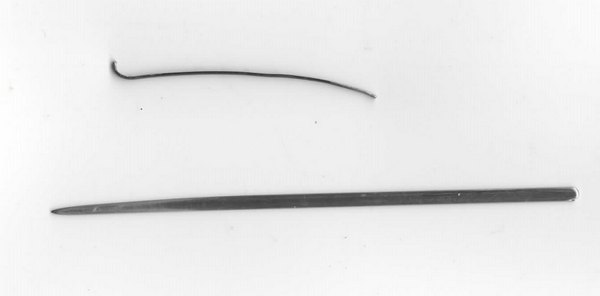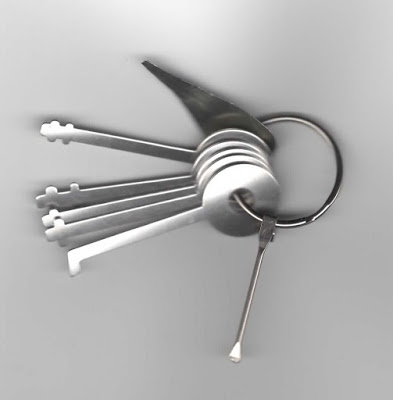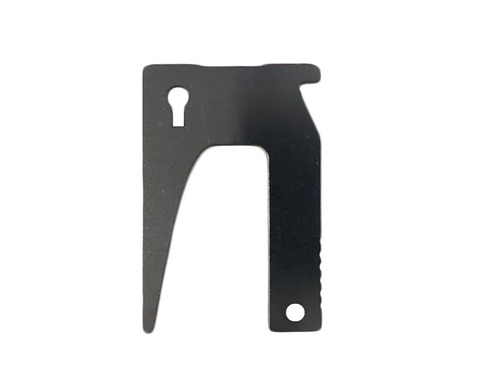I have been promising to write about the SERE pin for some time.

SERE Pin
The SERE Pin is an implement for escape and evasion applications. It is very easily concealed. You can push the shaft down the seam of a garment, for example.
The SERE Pin has four applications:
• It acts like a key to lift the pawl of handcuffs.
• It can disengage the double lock mechanism of handcuffs.
• It can serve as a shank to separate the teeth of a ratchet mechanism of handcuffs.
• It can be used to shim or lift the pawl of a zip/cable tie.

For an explanation of these terms I will direct you to my older posts on double-locking and shimming.
To disengage the double-lock or handcuffs, use the long, curved end of the tool. In the illustration, one would introduce it at around the 4:30 position on the keyhole and use it to push the double-locking mechanism (the red part in the image) upward.
Once the double lock is disengaged, the pawl can be shimmed or lifted.
To lift the pawl, insert the short hooked end of the SERE pin at around the 11 o'clock position and use it to lift the lock bar (green component) inward.
To shim, insert the long part of the tool between the teeth. You may need to tighten the bracelet a little to achieve this. If the shim becomes caught you may have to straighten it a little.
SERE pins are easily fabricated from bobby pins. Do not make the short hook too long. I recommend rounding off the corners and bevelling the tips.
EDC Bypass Knife
The second item on today’s “show and tell” is a work in progress.
After I wrote yesterday’s blog, I set about creating a bypass knife that was compatible with my EDC kit.
Basic design requirement is that it should fit within the pouch that carries part of my EDC. Whether this is where I will carry it, I have yet to decide.

As a lock picker, I acquire any windscreen-wiper inserts whenever I come across them. For this project I selected a narrow one that already ended in a partial point at one end. Width is about 3 mm.
The point was tapered further with a hand-file and a Dremel tool. One side was left reasonably straight, the other tapered more so the point is offset.
Once the point was formed, the end of the insert was cut 10 cm from its end. The butt end was rounded and smoothed.
The point was smoothed and polished with several grades of glass-paper.
It is possible that the point needs to be made more acute. The only bypass knife I have is a cheap Chinese one. My tool is already better finished than that! Also, I lack any bypass-knife-vulnerable locks to try it out on.
How often will I encounter a vulnerable lock I might need to use the tool on? I don’t know. This did get me thinking about other functions it may have. (Using it as a nail-cleaner probably shouldn’t count!)
The butt end may serve as a skeleton key. The width is virtually the same as the shanks of my bunch of skeleton keys. It has already opened a small warded luggage lock I have.
The pointed end could be used on the pawl of a zip-tie.
I can also confirm that the tool makes an effective handcuff shim. Worked better than I expected, if I am honest. It might be prudent to polish and smooth the rest of the shaft for such applications.






